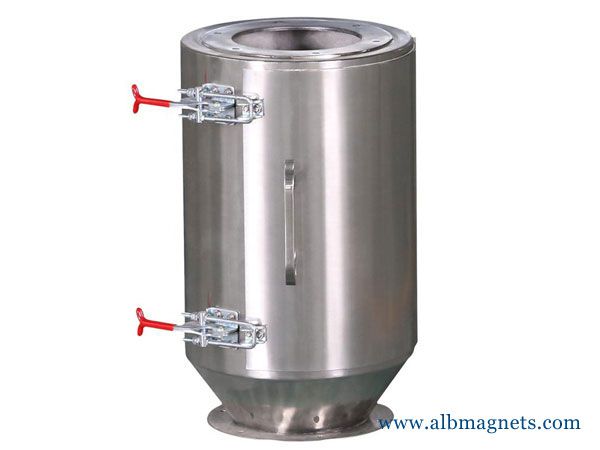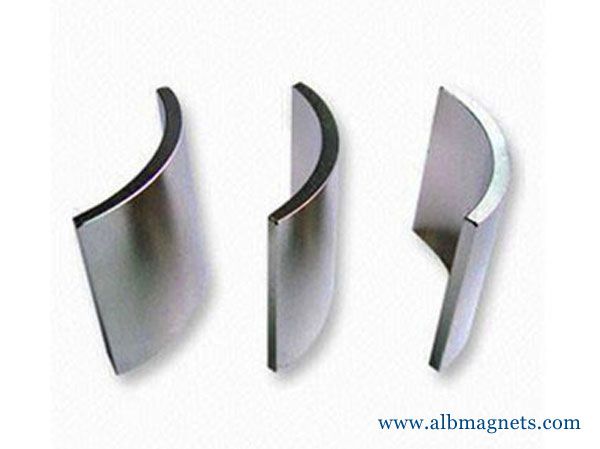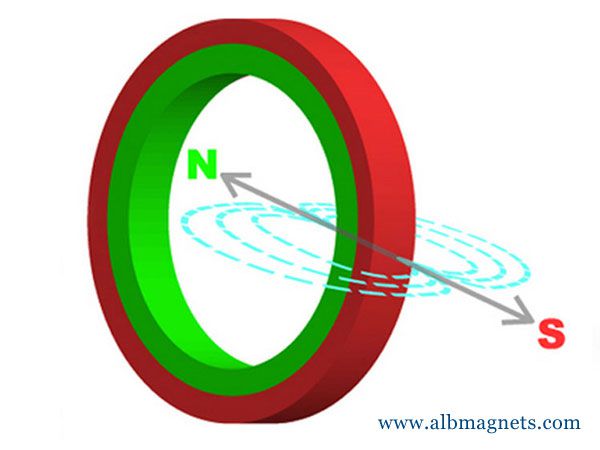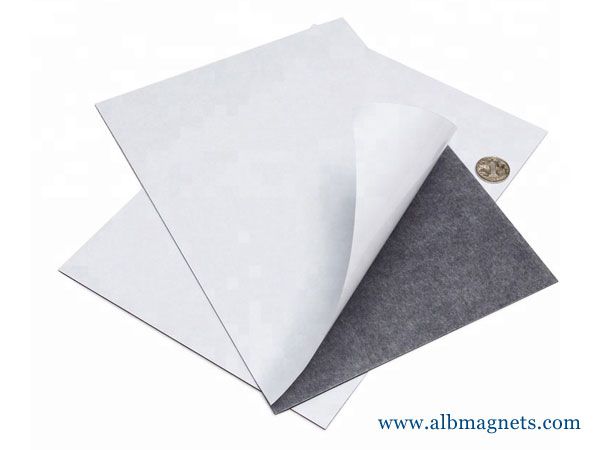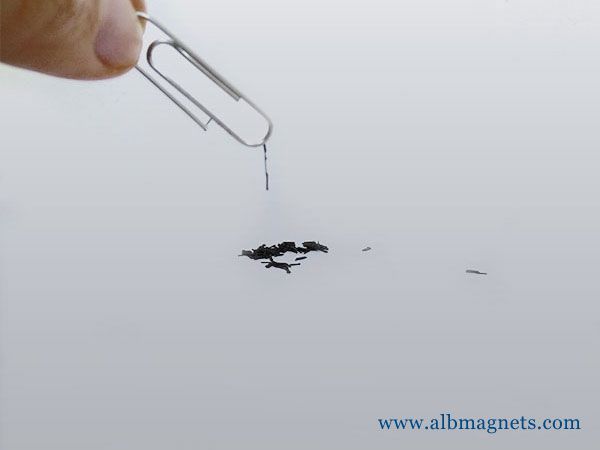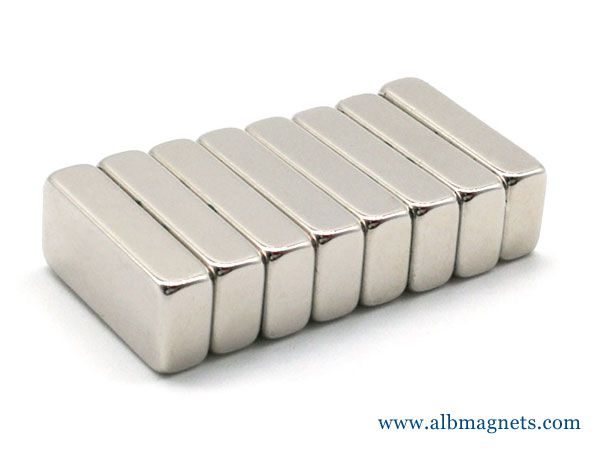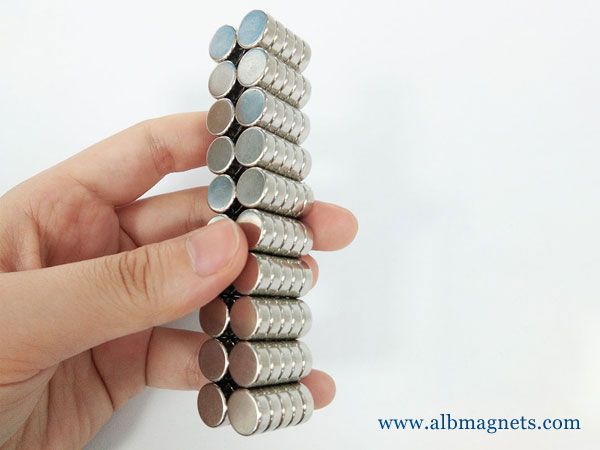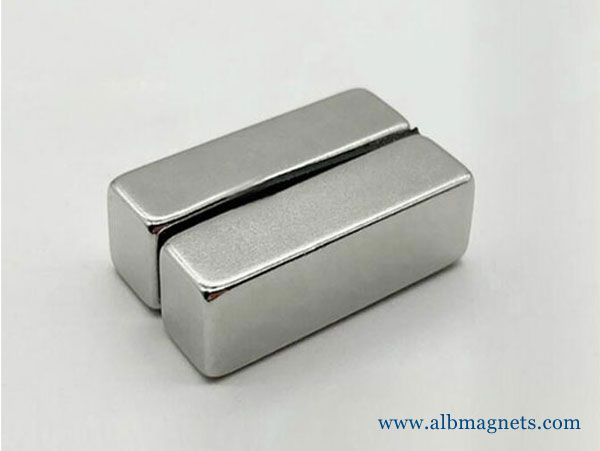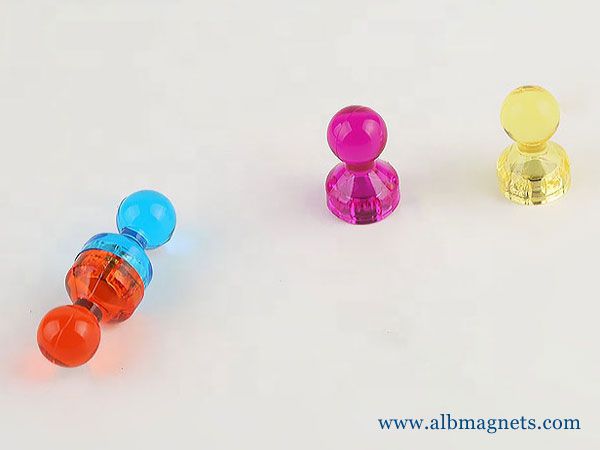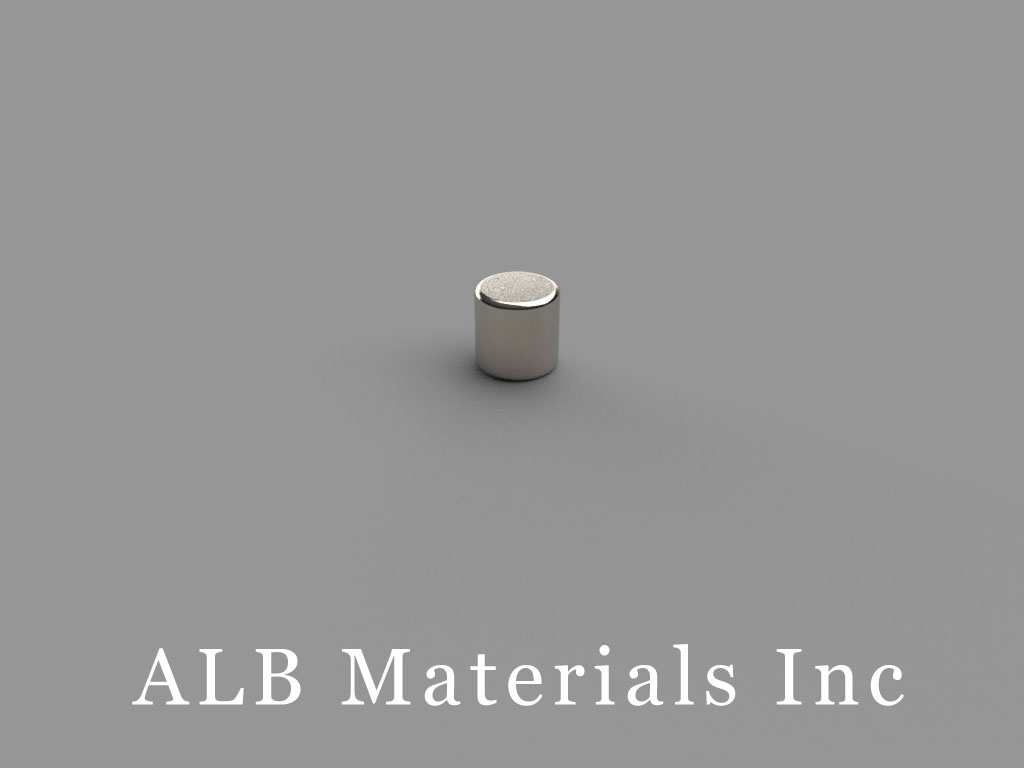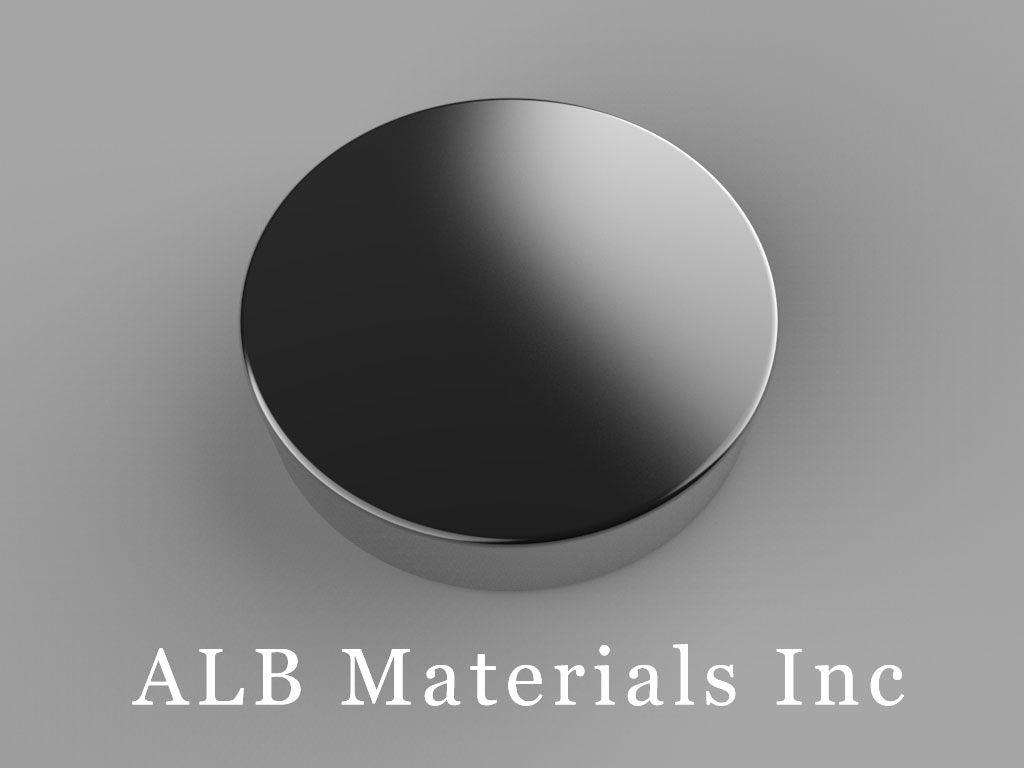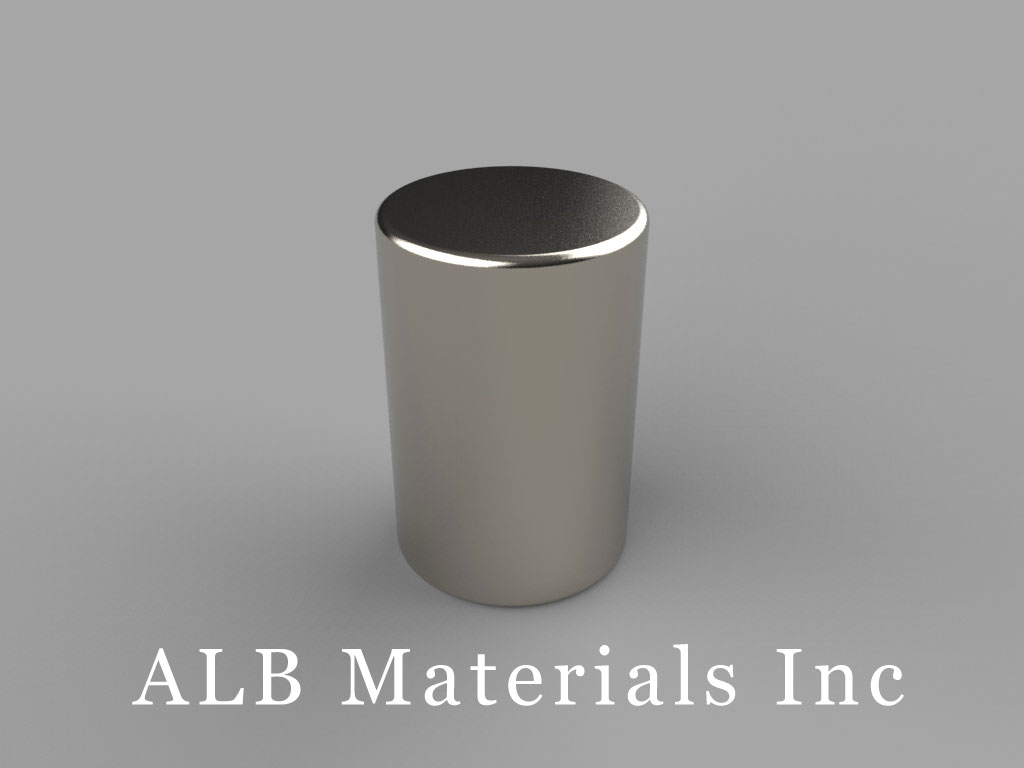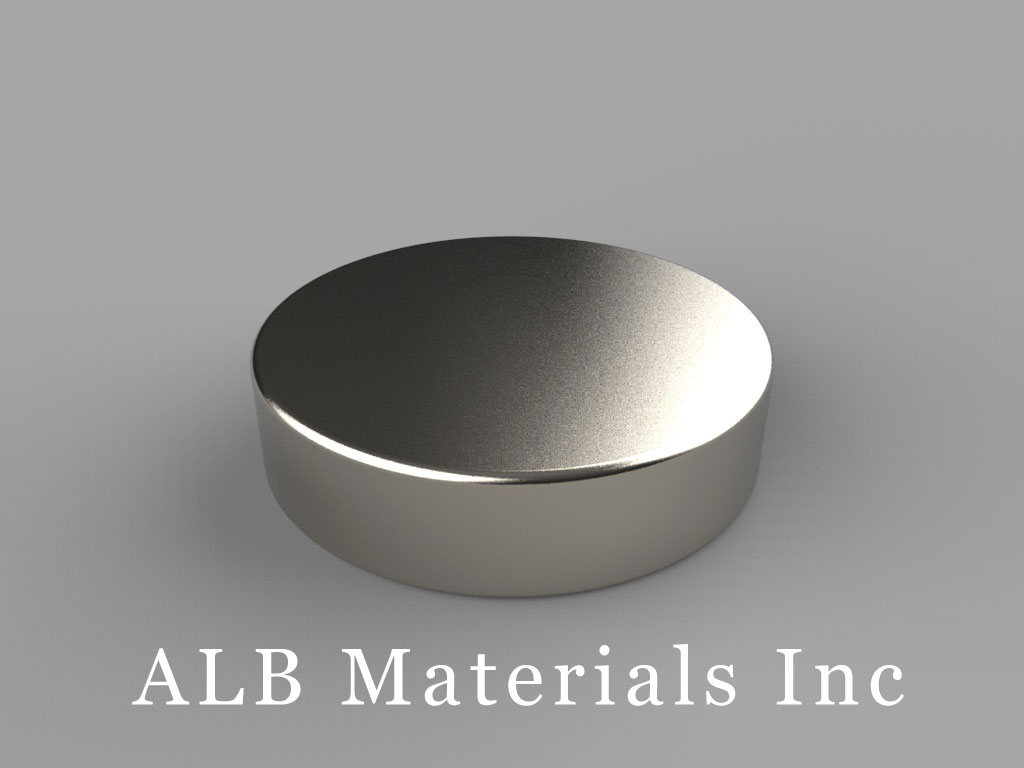401 Ryland St. Ste 200-A,
Reno, NV 89502
United States
E-mail: sales@albmaterials.com
- BX8X8X8-N52 Neodymium Magnets, 1 1/2 inch x 1 1/2 inch x 1 1/2 inch thick
- D88-N52 Neodymium Magnets, 1/2 inch dia. x 1/2 inch thick
- B30x5x3mm Neodymium Magnet, 30 x 5 x 3mm Block Magnet
- D-D24H16-N48 Neodymium Magnet, 24x16mm Disc Magnet
- B10x10x10mm Neodymium Magnet, 10 x 10 x 10mm Block Magnet
- D30x30mm Neodymium Magnet, 30 x 30mm Cylinder Magnet
- D-D9.53H0.79-N52 Neodymium Magnet, 9.53x0.79mm Disc Magnet
- DA03 Neodymium Magnets, 5/8 inch dia. x 3/32 inch thick
- B444-N52 Neodymium Magnets, 1/4 inch x 1/4 inch x 1/4 inch thick
- DX2X0 Neodymium Magnets, 1 1/8 inch dia. x 1 inch thick
- BX0X09 Neodymium Magnets, 1 inch x 1 inch x 9/16 inch thick
- RXC88 Neodymium Magnets, 1 3/4 inch od x 1/2 inch id x 1/2 inch thick
- DCY8 Neodymium Magnets, 3/4 inch dia. x 2 1/2 inch thick
- DA6 Neodymium Magnets, 5/8 inch dia. x 3/8 inch thick
- D70x40mm Neodymium Magnet, 70 x 40mm Disc Magnet
- D84PC-RED Plastic Coated Neodymium Magnets
A Magnet Attracts A Piece Of Iron
a magnet attracts a piece of iron
A piece of iron ordinarily will be attracted to a magnet, but when you heat the iron to a high enough temperature (called the Curie point), it loses its ability to be ...
A small magnet such as a ceramic disk magnet
String, about 1 foot (30 cm) long
A 3-inch (8-cm) length of thin steel wire, obtained by separating one strand from ordinary braided galvanized picture-hanging wire
A stand to hold the magnet pendulum and wire (examples shown are made from PVC, a plastic cup, and wooden sticks, but feel free to improvise using available materials of your choice)
Two alligator-clip leads
One 6-volt lantern battery (or other 6-volt power supply)
A note on materials: Braided copper wire and aluminum wire are available, but will not work here;
an iron wire can work but is not commonly available.
Whatever you use, be sure to stay away from the plastic-coated wire, which can burn if it gets hot.
Make suitable stands either as shown in the photos above or of your own design.
Suspend the magnet from the top of the stand with a string.
Make the pendulum at least 4 in (10 cm) long.
Stretch the wire between two posts so that, at its closest, the wire is 1 in (2.5 cm) from the magnet.
To-Do and Notice
Touch the magnet to the wire.
It should magnetically attract and stick to the wire.
Connect the clip leads to the terminals of the lantern battery.
Connect one clip lead to one side of the wire, and touch the other clip lead to the wire on the opposite side of the magnet.
The current will flow through the wire, causing it to heat up.
Be careful—the wire will get hot! As the wire heats up and begins to glow, the magnet will fall away from the wire.
Take a clip lead away from the wire and let the wire cool.
When the wire is cool, notice that the magnet will stick to it once again.
If the wire does not heat up enough to glow red, move the clip leads closer together.
What’s Going On?
Steel wire is made of atoms that act like tiny magnets, each of which has a north and south pole of its own.
These atoms usually point in all different directions, so the steel has no net magnetic field.
But when you hold a magnet up to the wire, the magnet makes the steel atoms line up.
These lined-up atomic magnets turn the steel wire into a magnet.
The steel is then attracted to the original magnet.
High temperatures can disturb this process of magnetization.
Thermal energy makes the steel atoms jiggle back and forth, disturbing their magnetic alignment.
When the vibration of the atoms becomes too great, the atomic magnets do not line up as well, and the steel loses its magnetism.
The temperature at which this occurs is called the Curie point.
Going Further
Inside the earth, there is a core of molten iron.
This iron is at a temperature above the Curie point and therefore cannot be magnetized.
Yet the earth is magnetized, with a north and a south magnetic pole.
The magnetic field of the earth comes from an electromagnet—that is, from electrical currents flowing inside the liquid metal core.
A magnet attracts a piece of iron
Magnetic domain alignment creates a stronger external magnetic field.
The field of one piece of iron, in turn, can align domains in another iron sample.
A non-uniform magnetic field exerts a net force of attraction on magnetic dipoles aligned with the field.
Magnetic particle inspection (MPI) is a non-destructive testing (NDT) process for detecting surface and slightly subsurface discontinuities in ferroelectric materials such as iron, nickel, cobalt, and some of their alloys.
The process puts a magnetic field into the part.
The piece can be magnetized by direct or indirect magnetization.
Direct magnetization occurs when the electric current is passed through the test object and a magnetic field is formed in the material.
Indirect magnetization occurs when no electric current is passed through the test object, but a magnetic field is applied from an outside source.
The magnetic lines of force are perpendicular to the direction of the electric current which may be either alternating current (AC) or some form of direct current (DC) (rectified AC).
Magnetism is the force exerted by magnet s when they attract or repel each other.
Magnetism is caused by the motion of electric charge s.
Every substance is made up of tiny units called atoms.
Each atom has electron s, particle s that carry electric charges.
Spinning like tops, the electrons circle the nucleus, or core, of an atom.
Their movement generates an electric current and causes each electron to act like a microscopic magnet.
In most substances, equal numbers of electrons spin in opposite directions, which cancels out their magnetism.
That is why materials such as cloth or paper are said to be weakly magnetic.
In substances such as iron, cobalt, and nickel, most of the electrons spin in the same direction.
This makes the atoms in these substances strongly magnetic—but they are not yet magnets.
To become magnetize d, another strongly magnetic substance must enter the magnetic field of an existing magnet.
The magnetic field is the area around a magnet that has a magnetic force.
All magnets have north and south poles.
Opposite poles are attracted to each other, while the same poles repel each other.
When you rub a piece of iron along a magnet, the north-seeking poles of the atoms in the iron line up in the same direction.
The force generated by the align ed atoms creates a magnetic field.
The piece of iron has become a magnet.
Some substances can be magnetized by an electric current.
When electricity runs through a coil of wire, it produces a magnetic field.
The field around the coil will disappear, however, as soon as the electric current is turned off.
Geomagnetic Poles
The Earth is a magnet.
Scientists do not fully understand why, but they think the movement of molten metal in the Earth’s outer core generates electric currents.
The currents create a magnetic field with invisible lines of force flowing between the Earth’s magnetic poles.
The geomagnetic pole s are not the same as the North and South Poles.
Earth’s magnetic poles often move, due to activity far beneath the Earth’s surface.
The shifting locations of the geomagnetic poles are recorded in rocks that form when molten material called magma wells up through the Earth’s crust and pours out as lava.
As lava cools and becomes solid rock, strongly magnetic particles within the rock become magnetized by the Earth’s magnetic field.
The particles line up along the lines of force in the Earth’s field.
In this way, rocks lock-in a record of the position of the Earth’s geomagnetic poles at that time.
Strangely, the magnetic records of rocks formed at the same time seem to point to different locations for the poles.
According to the theory of plate tectonics, the rocky plates that make up the Earth’s hard shell are constantly moving.
Thus, the plates on which the rocks solidified have moved since the rocks recorded the position of the geomagnetic poles.
These magnetic records also show that the geomagnetic poles have reversed—changed into the opposite kind of pole—hundreds of times since the Earth formed.
Earth’s magnetic field does not move quickly or reverse often.
Therefore, it can be a useful tool for helping people find their way around.
For hundreds of years, people have used magnetic compasses to navigate using Earth’s magnetic field.
The magnetic needle of a compass lines up with Earth’s magnetic poles.
The north end of a magnet points toward the magnetic north pole.
Earth’s magnetic field dominates a region called the magnetosphere, which wraps around the planet and its atmosphere.
The solar wind, charged particles from the sun, presses the magnetosphere against the Earth on the side facing the sun and stretches it into a teardrop shape on the shadow side.
The magnetosphere protects the Earth from most of the particles, but some leak through it and become trapped.
When particles from the solar wind hit atoms of gas in the upper atmosphere around the geomagnetic poles, they produce light displays called aurora s.
These auroras appear over places like Alaska, Canada and Scandinavia, where they are sometimes called “ Northern Lights .” The “ Southern Lights ” can be seen in Antarctica and New Zealand.
The iron in the sand is magnetic, strongly attracted to the magnet on an atomic level.
Photograph by MaryLou Naccarato, MyShot
Historic Directions
The ancient Greeks and Chinese knew about naturally magnetic stones called "lodestones." These chunks of iron-rich minerals may have been magnetized by lightning.
The Chinese discovered that they could make a needle magnetic by stroking it against a lodestone, and that the needle would point north-south.
Animal Magnetism
Some animals, such as pigeons, bees, and salmon, can detect the Earth's magnetic field and use it to navigate.
Scientists aren't sure how they do this, but these creatures seem to have magnetic material in their bodies that acts like a compass.
What is attracted to magnets?
Experiments with magnets and our surroundings
Take a wand magnet and go around the house to see what will stick to it or feel like it is attracted to it.
Keep a list of the items you tried, and if the attraction was strong, weak, or none. Then try to figure out why.
Metals
Try especially different types of metals, for example:
iron and steel (nails, screws, and nuts)
stainless steel (special hardware, some kitchen sinks, most everyday forks and spoons)
brass (special screws, kick-plates on front doors)
zinc (battery case)
copper (old pennies, copper pipes)
bronze (marine bell)
silver (expensive silverware, some jewelry)
gold (wedding rings, grandma's teeth)
mercury (thermometer - no need to break the thermometer to do the test)
nickel (some coins, US nickels are made of 75% copper!, try Canadian nickels)
tungsten (filament in a light bulb)
magnesium (from a science supply store, used in a ribbon form for burning in air, or from a hardware store that carries magnesium floats for working with concrete)
coins from several countries (try Canada, England, China, Japan, Germany)
About the US coins, I know the following:
Before 1982, the penny was 95% copper. After that, it was changed to 2.6% copper. It is mostly a zinc alloy with a copper coating.
The nickel is 75% copper.
The dime, quarter and a half dollar is 91.67% copper.
Susan B.
Anthony dollar is 87.5% copper.
The new gold-colored dollar is 90% copper.
To learn more about some of these metals, check out the pendulum experiment.
Below is a photo showing some of these metals, and a photo showing copper balls. (I got the copper balls from at gift shop in the UP of Michigan, at Big Springs State Park, just north of Manistique.) The cylinder of titanium was from a jet engine exhaust system.
Minerals
Besides seeing what effect a strong magnet has on different metals, try and find out the effect it has on different minerals. A great source of minerals is found in the shops of most public, natural and science museums and in science shops or nature stores at malls.
They usually have a stand with several different types of colorful minerals displayed;
often the pieces are highly polished. They come with a small card describing the mineral and cost about $1 per item.
Rose quartz Blue lace agate Jasper Chalcedony
Sodalite Tourmaline Snowflake obsidian Obsidian
Bornite (Peacock ore) Silicon Pyrite Galena
Quartz Tektite Lodestone Hematite
Bismuth Lodestone Tigereye Blue calcite
Magnetite Iceland Spar (interesting optical properties)
In particular, try minerals with iron or nickel in them.
An interesting science fair project would be to have several types of minerals on display along with a wand magnet.
You can see which minerals are strongly attracted to the magnet (can be picked up by the magnet), which are slightly attracted to the magnet, and which are not attracted at all. Try to predict what category each would fall into.
Here are some minerals I know are strongly or slightly attracted to magnets:
Hematite
(This is usually the very shiny, black, heavy mineral found in the displays, shown at the left in the first photo. Some jewelry is made of hematite.)
Magnetite
(This may very likely be a weak magnet by itself! Remember, this was what started the whole study of magnetism, to begin within ancient Greece.
This is seen in the fifth photo above.)
Lodestone (similar to magnetite, but without the cubic crystalline form)
Franklinite
Ilmenite
Pyrrhotite
Don't forget to try pyrite (also known as "fool’s gold", made of iron and sulfur), cobaltite, zincite, arsenopyrite, skutterudites, obsidian (also known as Apache Tears) and others.
To make the project more colorful and interesting, I also have some silicon, tektite, tourmaline, quartz, marble, tiger-eye, peacock ore, bismuth, and other minerals. Possible selection of minerals from Edmund 81-632. Also, check this site for more as a source for minerals and other interesting links:
I found some magnetized stones that looked like hematite but they would stick to each other! I was at Wonderworks in Orlando, Florida when I spotted them. Now, hematite cannot be permanently magnetized. So, how do they do that? They are actually ferrite magnets that have been polished to look like hematite and then magnetized. I had heard about spheres of these that would stick together making a bracelet, too.
Ferrofluids
The area of ferrofluids is quite new, and very interesting. Ferrofluid is made of small particles (~10nm) of magnetite (Fe3O4) surrounded by a surfactant such as a tetramethylammonium hydroxide. The surfactant is needed to keep the particles of magnetite from agglomerating (clumping together) due to magnetic and van der Waals interactions. It's like having a slippery skin around the small particle of magnetite. Thermal motion helps but is not sufficient by itself. A group of these prepared particles is like a solution that acts like a medium-density liquid that is affected by magnetic fields. When a magnet is brought near it, the liquid splits up and starts to group itself into spikes or hairs along the magnetic field lines as shown in the photos. It is used to seal rotating shafts, and in speakers to help dampen the vibrations of the speaker coil, and help cool the coil. Great stuff to play with!
Here are some photos of what you can do with a vial of ferrofluid (I purchased the kit FF-100 from Educational Innovations as well as the separate preform display cell FF-200 sitting in front.) When storing the preform display cell, it is best to sit it onto its cap. This keeps the interior walls cleanest. The cost for the kit is about $50.
The cost for the preform cell is about $17.
Arbor, Edmund 82-215, AS&S, EdIn FF-100, FF-200.
Another source for Ferrofluid is from CZFerro. Their kits are quite reasonable and come with a pair of magnets with which you can manipulate the fluid.
Other Objects
Try other materials, too, like wood, plastic, carbon, cotton, wool, glass, concrete, leaves, CDs, and so on, which you can find around the house.
Some things which will be attracted to or stick to a very strong magnet, like a rare-earth magnet, is the tape from a VCR or audiotape, a dollar bill, and the surface of a floppy disk. The reason these items will stick to a magnet is because of the very small particles of iron used in the ink of the dollar bill, and the iron oxide (ferric oxide) used as the recording medium for the VCR and audio tapes and for the floppy disk. (Please only use tape or disk which you want to destroy!)
Let's try an experiment:
As you can see in the photo above, the tape from a VCR is attracted to the rare-earth magnet. The magnet will erase the information contained on that section of the VCR tape. I used a pencil to hold open the flip-top cover.
How about a dollar bill?
On the other two photos, you can see how the bill is attracted to the rare-earth magnet.
Take a crisp bill.
Fold it about 55% of the way along its length.
Lay it on a table as shown with the longer portion on the table, the shorter portion sticking up.
Bring the magnet close to the edge of the bill.
Watch the bill spring toward the magnet.
The reason for the attraction is that the ink on the bill has some iron particles in it.
To see what effect a magnet has on floppy disks:
Take a floppy disk and try these things with it. Be sure to record exactly what you do and your observations - the two most important parts of an experiment!
Be sure to try some typical refrigerator magnets (usually very weak since they can barely hold one piece of paper to the fridge door) as well as some stronger rare-earth magnets (neodymium-iron-boron magnets which can easily hold a stack of 20 sheets to the fridge).
Also, vary how the magnet approaches the floppy disk and leaves the disk.
For example - directly toward it, perpendicular to the plane of the disk,
or across the face of the disk, in parallel to the plane of the disk.
Perhaps a quick approach and a slow approach could also be compared.
Try the top side and the bottom side of the disk.
Even try moving the magnet around in a circle on the face of the disk.
Maybe even have a floppy held to the fridge by a magnet for a week to see if time has any effect.
If you can make an AC electromagnet, that would also be a great addition for comparison.
What kind of data will you put on the disk in order to see if the data has been corrupted?
Perhaps some bitmap images would work well, with a simple pattern of black and white squares.
They are usually large files so they would cover a large part of the disk.
Also, looking at the image would be a very quick and easy way to determine if any bits were changed.
Another method would be to have a large data file on the disk, and do a file compare to the original which is kept on the hard drive.
Want to try something a bit unusual? You know that several kinds of cereal claim to be "iron-fortified". How do they do that? By adding some finely powdered iron (like small iron filings) in with the cereal as it is being mixed. To see this, simply do the following:
a. Get some cereal that has a large percentage of the RDA (Recommended Dietary Allowance) for iron, and pour half a serving into a bowl.
b. Add water (no need to waste the milk) to the cereal.
c. Mix up the stuff so that it is a watery slurry, not very thick.
d. Take a strong rare-earth magnet and place it into an inside-out zip-lock bag. The purpose for the bag is to keep the surface of the magnet free from iron particles which are very difficult to get off.
e. Move the bagged magnet around in the slurry of the cereal.
f. After a minute, take the magnet and its plastic bag out of the slurry, and examine it to see small, dark specks attached to the plastic at the magnet. This is metallic iron.
g. Unfortunately, our bodies can not absorb metallic iron very well, so this really does not help with our intake of iron. It would be better to take a supplementary multi-vitamin/mineral pill that contains an absorbable iron. The iron is needed to help form hemoglobin, which is the pigment in red blood cells responsible for transporting oxygen.
h. You can now turn the bag outside in and carefully remove the magnet from the zip-lock bag. This will keep the iron filings inside the bag and off the magnet.
Conclusions
What did you find out? Do you now have a fairly extensive list of things magnets can and cannot attract?
Check out this information as well:
For more information on various minerals, a great source is:
The Audubon Society Field Guide to North American Rocks and Minerals
ISBN 0-394-50269-8
Another site for obtaining various minerals is:
Problem with 2 or 3 unknown rods
Suppose you are given 2 metal rods: one is a magnet, the other is made of iron. However, both of them are painted so they appear to be the same. Their weight is the same. You are in a room with no windows so you can't tell where North is located. You have no other objects with you. How will you be able to determine which rod is the magnet and which rod is iron?
Suppose you are given 3 metal rods: one is a magnet, one is made of iron, and one is made of brass. However, all of them are painted so they appear to be the same. Their weight is the same. You are in a room with no windows so you can't tell where North is located. You have no other objects with you. How will you be able to determine which rod is the magnet, which rod is iron, and which rod is brass?
What is Magnetism?
Magnets are objects, which can attract, or pull, on some metals, like iron and steel.
If you rub a piece of steel with a strong magnet, the piece of steel will because of a magnet too. It has become magnetized.
Other metals, like copper or gold, are not attracted to magnets.
Magnets can also attract each other, but only if they face in opposite directions.
A magnet has two ends called poles;
one end is the north pole and the other is the south pole.
A north pole will attract a south pole;
the magnets pull on each other.
But the two north poles will push each other away.
We say the magnets repel each other.
Magnets seem to act something like positive and negative electric charges.
Electricity and magnetism are very closely related.
If the words north and south remind you of anything, the earth is, in fact, a giant magnet.
A compass is a tiny magnet balanced on a point so it can turn freely.
The magnet is attracted by the earth’s magnetic north pole and always points in that direction.
A good way to see how the magnet attracts is to do the following experiment.
Take a strong bar magnet and putt a piece of paring over it.
Then sprinkle some iron filings on the paper.
The iron filings will make a pattern.
This pattern shows the magnetic field.
The drawing below shows what the magnetic field looks like for a bar magnet (although the lines don’t really exist).
Now try it with two magnets.
Point their north poles at each other.
The iron filings show how the magnetic field looks when the magnets repel.
Now turn one magnet in the other direction to see how the magnets attract.
Why Does a Magnet Attract Iron?
Most people know that iron is attracted to magnets, while other metals like gold and silver are not.
Yet few people can explain exactly why iron has this magical relationship with magnetism.
To arrive at the answer, you need to get down to the atomic level and examine the magnetic nature of an atom's electrons.
Electrons and Magnetism
The science behind magnetism, like electricity, comes down to electrons, the negatively charged particles surrounding an atom's nucleus.
All electrons have magnetic properties, just as they have electrical properties.
When an electron exhibits magnetism, and consequently, it's the ability to interact with an external magnetic field, it's said to have a magnetic moment.
An electron's magnetic moment is based on its spin and its orbit, which are both principals of quantum mechanics.
Without getting into quantum equations, suffice it to say that an electron's magnetic moment is due to its motion.
What Makes a Material Magnetic?
While the individual atoms in any substance can have magnetic moments, that doesn't mean the substance itself is magnetic.
For the substance to be magnetic, you need a sufficient number of atoms all working together.
This requires two things.
The first thing that needs to happen is that there must be some disagreement between the atoms.
In many substances, all the electrons line themselves up in orderly pairs, each of them canceling out the magnetic properties of the other.
If you imagine 1,000 locomotives, half of them trying to go north and the other half going south, none of them are going to move.
So, for a substance to be magnetic, its electrons can't all be paired up.
However, this in itself isn't enough for the substance to be magnetic.
Just because a material's electrons don't line up in pairs doesn't necessarily mean that the substance is magnetic.
Manganese, for example, an important mineral found in nuts and cereals and essential for healthy bones, is not magnetic, even though its electrons don't line up in pairs.
If you had 1001 train engines, 500 facing south and 501 facing north, that extra engine is not going to make much of a difference.
The second thing you need is for a sufficient number of electrons to align themselves parallel to each other – like a lot of locomotives facing in the same direction – so their ability to interact with an external magnetic field is substantial enough to move the entire object.
Any material that has these two conditions is called ferromagnetic.
Iron is the most common ferromagnetic element.
Two other ferromagnetic elements are nickel and cobalt.
However, several other substances can be ferromagnetic when they are heated or combined with other materials.
Part of the content in this article is reproduced from other media for the purpose of transmitting more information and does not mean that this website agrees with its views or confirms the authenticity of its content. It shall not bear direct responsibility and joint liability for the infringement of such works.
If there is any infringement, bad information, error correction, and other issues in the content of this page, please contact us at info@albmaterials.com
Link to this article: https://www.albmagnets.com/blog/a-magnet-attracts-a-piece-of-iron.html
How to choose and buy a strong neodymium magnet? ALBMagnets is a professional company for strong magnet design and manufacturing,
providing you with reliable N35, N38, N42, N52, N42SH and other grade super neodymium magnets and SmCo rare earth magnets.




